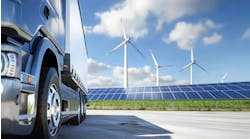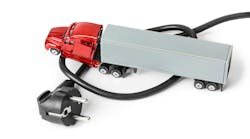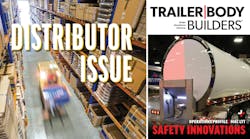NEW ORLEANS—The North American Council for Freight Efficiency and RMI have released a new thought leadership report, SuperTruck 2: Empowering Future Trucking.
The report focuses on lessons learned from the SuperTruck 2 program. The U.S. Department of Energy inspired American truck manufacturers by funding the first project to demonstrate a system of new technologies capable of significantly improving freight energy efficiency, reducing vehicle operating costs, and improving environmental sustainability.
“It takes some time to go from these prototypes to a production vehicle—but you will see these technologies coming in,” Rick Mihelic, NACFE’s director of emerging technologies and the author of the report, said during a press conference at the American Trucking Associations Technology & Maintenance Council 2024 Annual Meeting & Transportation Technology Exhibition here. “We have a number of major conclusions in [the report]. The single message is that extraordinary improvement is still on the table.”
Five teams participated in SuperTruck 2: Cummins & Peterbilt, Daimler Truck North America, Volvo Trucks, Navistar, and Paccar.
“SuperTruck 2 had the five teams looking at the entire tractor-trailer as a single unit, which yielded significantly improved performance benefits vs. a more piecemeal approach,” Mike Roeth, NACFE’s executive director, said.
The report documents the significant technologies investigated, developed, and demonstrated by the SuperTruck 2 teams and the potential for these technologies to influence future production truck designs.
The report includes three critical conclusions around fuel economy improvement, innovation diffusion, and the fact that many tractor-trailer system efficiency gains are universally applicable to all powertrain choices.
“The SuperTruck 2 teams achieved great improvements and delivered efficiency technologies to make zero-emission solutions more successful,” Mihelic said. “The technologies deployed on the SuperTruck 2 vehicles can be used on alternative fueled trucks to increase both range and freight capacity.”
Indeed, Roeth characterized the transition to clean freight vehicles as “the messy middle,” and OEMs face significant challenges as they prioritize their investments in the development of new products, driven by regulatory hurdles and varying incentive programs—whether that’s developing the last generation of diesel powertrains, RNG, BEVs, or hydrogen systems.
“There’s a lot of tough decisions to be made in the next year, not just for ’27 well into the ’30s,” Roeth said. “Each OEM really needs to look at what are they good at, what part of the market do they participate most in?”










